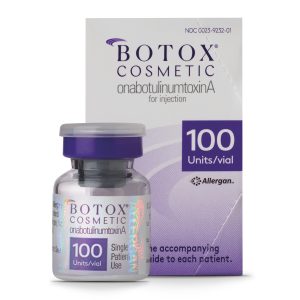History of Botox – Botulinum Toxin
Get your procedure in our Singapore aesthetic clinic today. We provide a wide variety of medical aesthetic treatments for our patients.
Featured On:





Botox is a popular cosmetic procedure many people use to reduce wrinkles and improve their facial appearance. But what many people don’t know is that it was originally developed as a treatment for neurological disorders. In this article, we will explore the history of Botox and how it has evolved from its initial use in medical treatments to its current use in cosmetic procedures.
This is part 3 of the ongoing series of our Intro to botox articles. View part 2.
Early History of Botox
Botulinum toxin, or Botox, was first discovered in 1895 by bacteriologist Justinus Kerner. He recognized the potential therapeutic effects of the toxin and conducted experiments on animals to prove his hypothesis. His findings demonstrated that when injected into muscles, the botulinum toxin could block nerve signals from reaching them, which resulted in muscle relaxation. This discovery led to further research into how botulinum toxin could be used medically.
The First Use of Botox in Medicine
In 1946, ophthalmologist Edward Schantz isolated the active form of botulinum toxin and named it “botulin” after the Latin word for sausage (from which he derived its origin). He tested his findings on monkeys and proved that botulism could be prevented by injecting small doses directly into affected muscles. This marked the beginning of using botulinum toxin as a medical treatment for various neurological conditions such as strabismus (crossed eyes), blepharospasm (involuntary eye spasms), dystonia (muscle contractions), and torticollis (wry neck).
Development as a Cosmetic Treatment
The 1990s saw increased demand for cosmetic treatments due to the media attention given to celebrities who had undergone plastic surgery procedures such as liposuction or face lifts. As more people sought out these treatments, dermatologists began exploring ways to offer similar results without invasive procedures on their patients. This eventually led to clinical trials with botulinum toxin being used as an alternative method for reducing wrinkles caused by aging or sun damage without having to go under the knife—and thus began its rise in popularity as a cosmetic treatment option than just a medical one.
Alan B. Scott is credited with being the pioneer of modern botox treatments. He was an ophthalmologist who first studied the effects of botulinum toxin in monkeys and developed a therapeutic injection of it for humans in 1989. His research showed that when injected into muscles, the botulinum toxin could block nerve signals from reaching them, which resulted in muscle relaxation.
Scott initially used Botox for strabismus (crossed eyes) and blepharospasm (involuntary eye spasms). After seeing successful results, he began testing other applications, such as treating dystonia (muscle contractions) and torticollis (wry neck). As Botox became more widespread, doctors started using it for aesthetic purposes to reduce wrinkles caused by aging or sun damage without having to perform invasive surgical procedures.
In 1991, Allergan Pharmaceuticals Inc. bought over botox, which developed and marketed Botox Cosmetic – the first FDA-approved form of botulinum toxin type A specifically designed for cosmetic use. Over time, Allergan’s Botox treatments have become increasingly popular due to their ability to provide visible improvements in facial appearance with minimal side effects or downtime post-procedure. Today, many people in Singapore receive regular Botox injections as part of their beauty regimen. This trend can be largely attributed to Alan B. Scott’s groundbreaking discoveries over two decades ago!
Modern Applications of Botox
As we move into 2021, many different types of injections are available that contain different forms of botulinum toxins, including Dysport® and Xeomin® in addition to traditional Botox® injections—all designed with specific applications depending on individual needs such as forehead wrinkles or crow’s feet around the eyes. These injections are commonly used today for their anti-aging properties. They can also be used therapeutically for treating excessive sweating conditions like hyperhidrosis or jaw clenching/grinding problems known as TMJ disorder (temporomandibular joint dysfunction).
Conclusion
Overall, modern society has benefited greatly from our understanding of how botulinum toxins work within our bodies—from being able to treat neurological diseases through blocking impulses between nerves and muscles all way down to being able to use it cosmetically so individuals can maintain their youthful appearance longer without having undergone surgeries with lengthy recovery times associated with them post-procedure!
Links to our Introduction to Botox series:
Part 1: Introduction to Botox Treatment
Part 2: Benefits of Botox Treatment
Part 3: History of Botox
Part 4: Precautions of Botox Treatment
Part 5: FAQs – Botox Treatment
